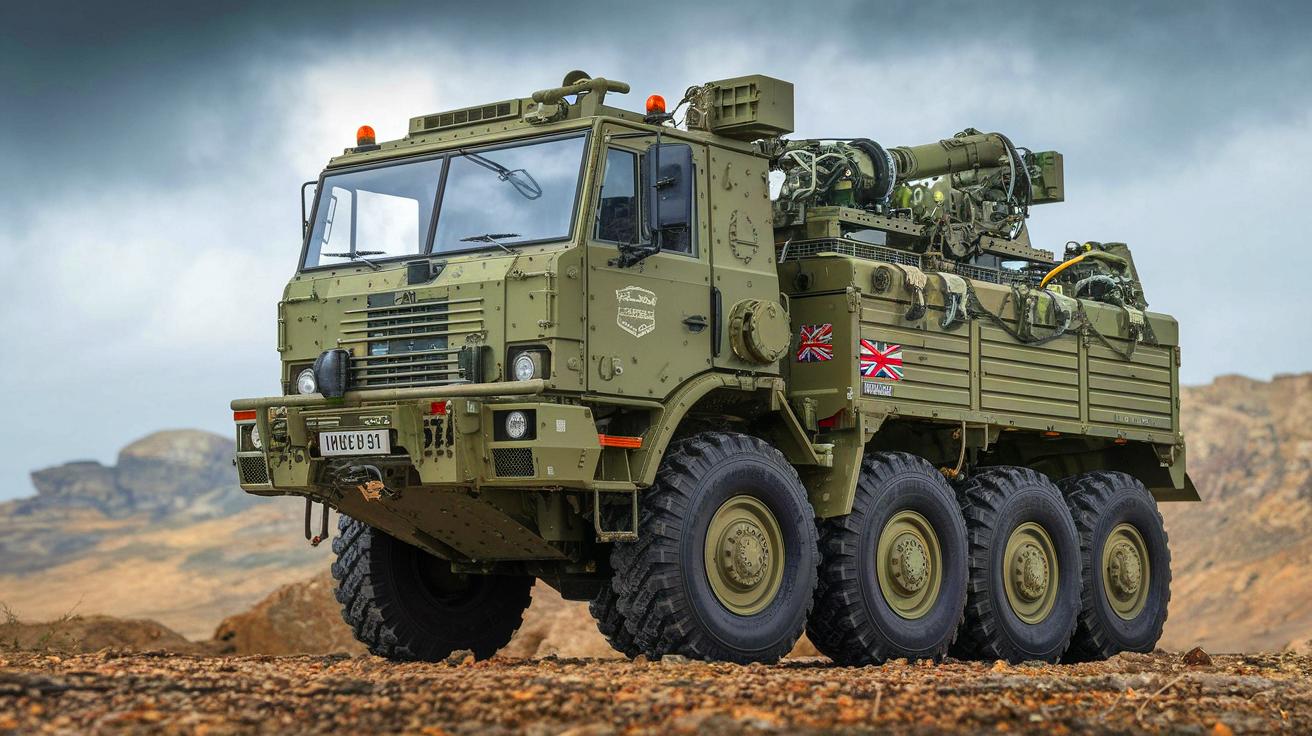| IN A NUTSHELL |
|
The British Army is making waves in military innovation with the development of WEEVIL, a robotic device designed to revolutionize mine-clearing operations. Unlike traditional methods that require a full crew to operate in perilous zones, this cutting-edge technology allows a single operator to manage operations from a safe distance. This advancement not only protects soldiers from danger but also enhances the efficiency of mine-clearing missions. As the world becomes increasingly aware of the devastating impacts of mines in conflict zones, technologies like WEEVIL are essential in paving the way for safer and more effective military operations.
Remote Mine Clearance
The introduction of WEEVIL marks a significant leap forward in remote mine-clearing technology. Developed in collaboration with the Defence Science and Technology Laboratory (Dstl) and Pearson Engineering Ltd, this system is engineered to transform standard armored vehicles into autonomous mine-clearers. The primary advantage of WEEVIL is its ability to keep soldiers out of harm’s way, allowing a single operator to manage operations from several miles away. This contrasts sharply with previous systems like the TROJAN Armoured Vehicle, which required a crew of three to operate within hazardous environments.
The prototype, integrated with the Warrior Infantry Fighting Vehicle, is equipped with a full-mine plow, remote control technology, and high-definition cameras. This setup enables it to clear minefields effectively and efficiently. The ongoing trials aim to refine the system’s capabilities, providing critical insights that will drive the future of mine-clearing technology. With the rise of anti-tank and anti-personnel mines in modern conflicts, particularly evident in the war in Ukraine, systems like WEEVIL offer a timely solution to enhance battlefield safety and ensure greater mobility for troops.
West Texas Measles Outbreak Nears 150 Cases, Raising Concerns
Autonomous Safety Solutions
The UK government is investing heavily in autonomous safety solutions as part of its Plan for Change, aiming to modernize defense capabilities and drive economic growth through innovation. The Ministry of Defence (MOD) is set to allocate at least 10 percent of its equipment procurement budget to novel capabilities, which include dual-use technologies, autonomous systems, and AI-enabled tools. The WEEVIL prototype is a prime example of this commitment—tested on a surrogate minefield in Newcastle, the system is now being developed further by the British Army.
Beyond defense, autonomous technologies are being harnessed for high-risk civilian applications. A collaboration between Oxford Dynamics, Createc, Autonomous Devices, and the University of Bristol has secured significant government funding to develop autonomous solutions for dangerous environments. This project includes a robot fleet capable of processing complex data in real-time and operating beyond the line of sight. Such technologies are expected to play a crucial role in managing Chemical, Biological, Radiological, and Nuclear (CBRN) incidents, enhancing safety and efficiency in these challenging scenarios.
Technological Milestones in Defense
The deployment of autonomous technologies in defense is not just limited to mine clearance. Recently, Boston Dynamics’ robot dog, Spot, was used at the Dounreay nuclear site in Scotland. This innovative application involved safely reactivating a dormant crane for handling radioactive waste. Such milestones highlight the growing reliance on robotics and autonomous systems in managing and removing hazardous materials. These technologies are crucial in both military and civilian settings, ensuring tasks are performed safely and efficiently.
By integrating advanced technologies into various operations, the UK is setting a precedent for other nations to follow. The use of autonomous systems to manage high-risk tasks demonstrates a commitment to not only enhancing operational efficiency but also safeguarding human lives. As these technologies continue to evolve, they promise to redefine the landscape of defense and safety operations, offering new possibilities for handling complex challenges.
Future Implications of Autonomous Systems
The rise of autonomous systems in the defense sector raises important questions about the future of military operations. As these technologies become more prevalent, they offer the potential to transform how conflicts are managed and resolved. By reducing the need for human presence in dangerous environments, autonomous systems can significantly lower the risk to personnel. However, this shift also prompts discussions on the ethical and strategic implications of relying heavily on technology in warfare.
While the benefits of enhanced safety and efficiency are clear, the integration of autonomous systems necessitates careful consideration of their impact on military strategy and global security. As the UK continues to lead in this field, it sets the stage for further advancements and collaborations. What role will autonomous technologies play in shaping the future of defense, and how will they influence the balance of power on the global stage?
Did you like it? 4.5/5 (26)


